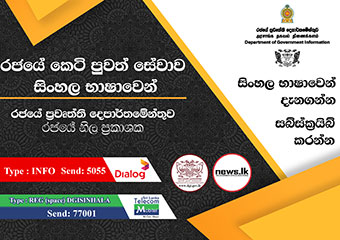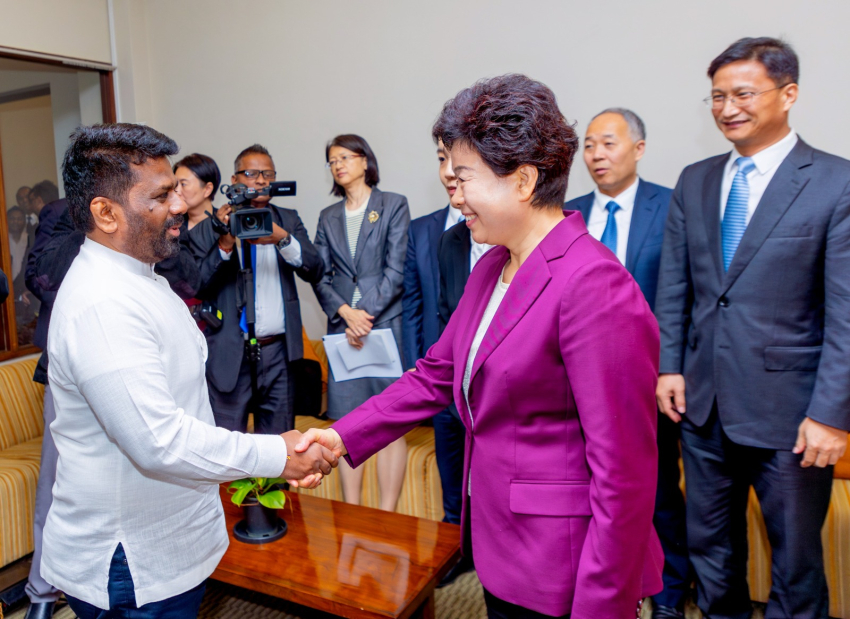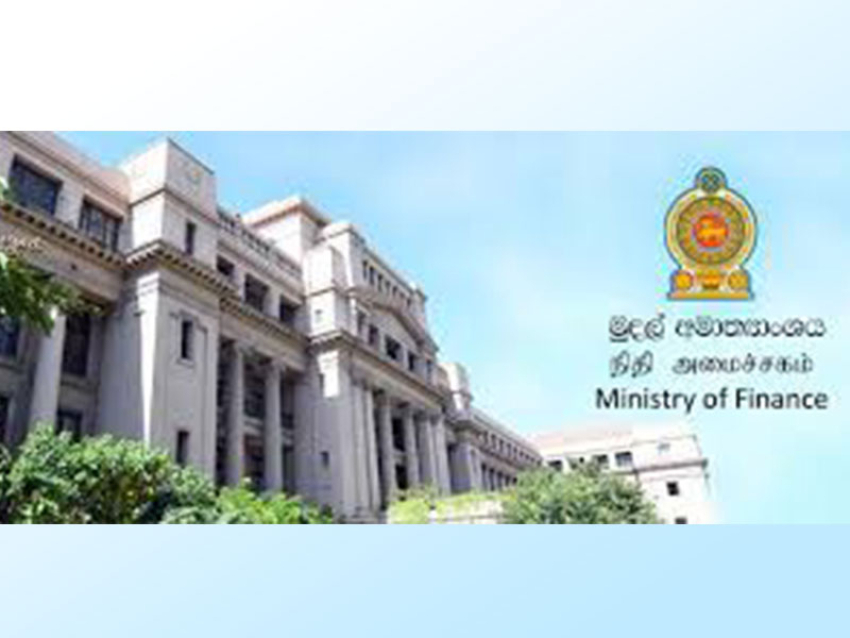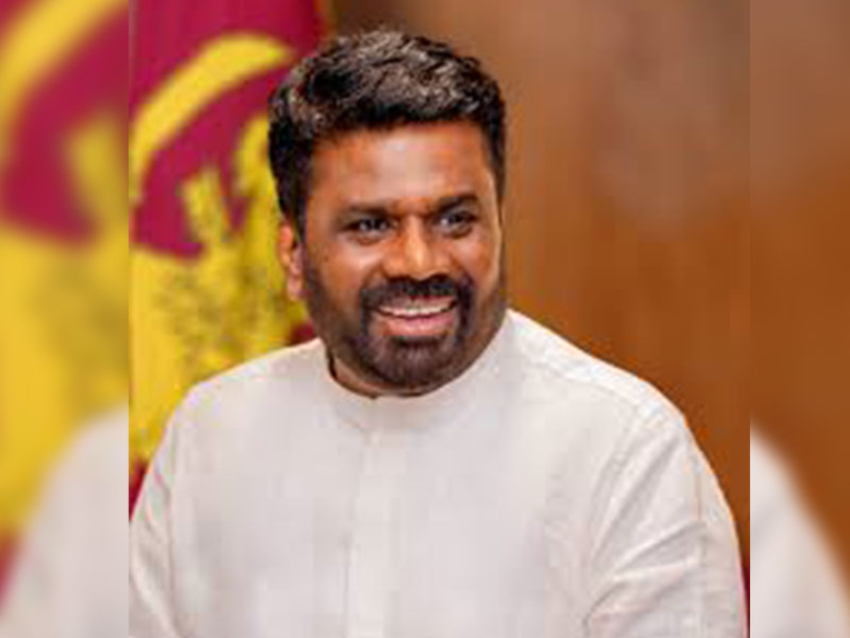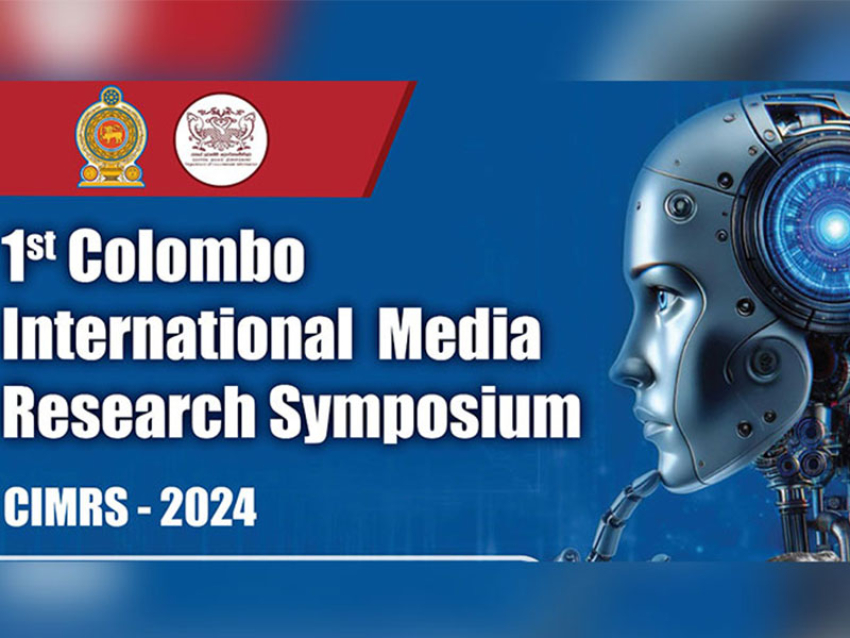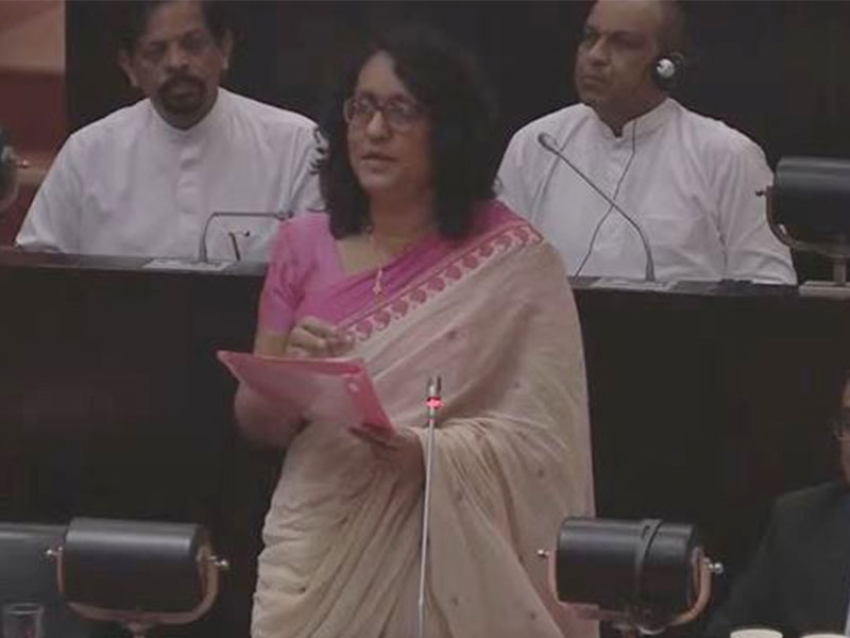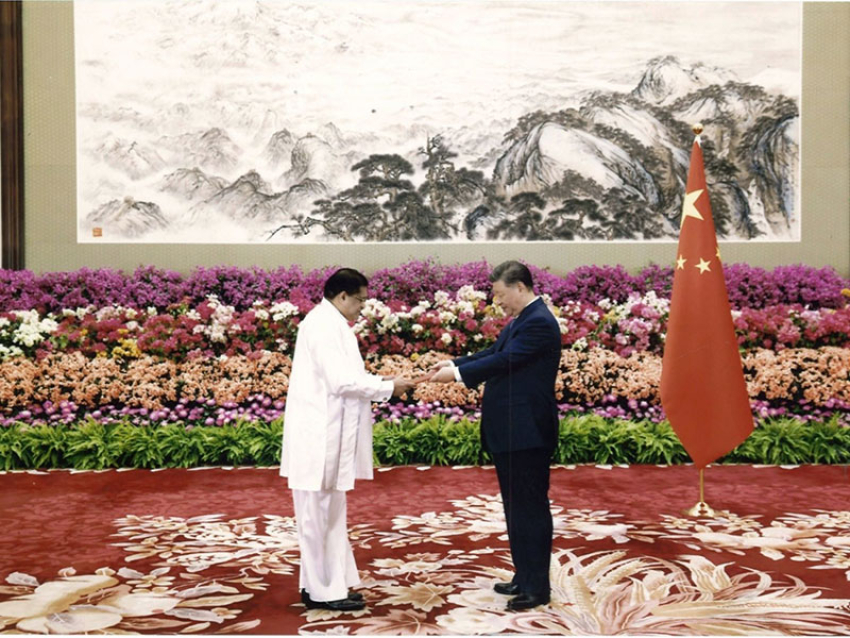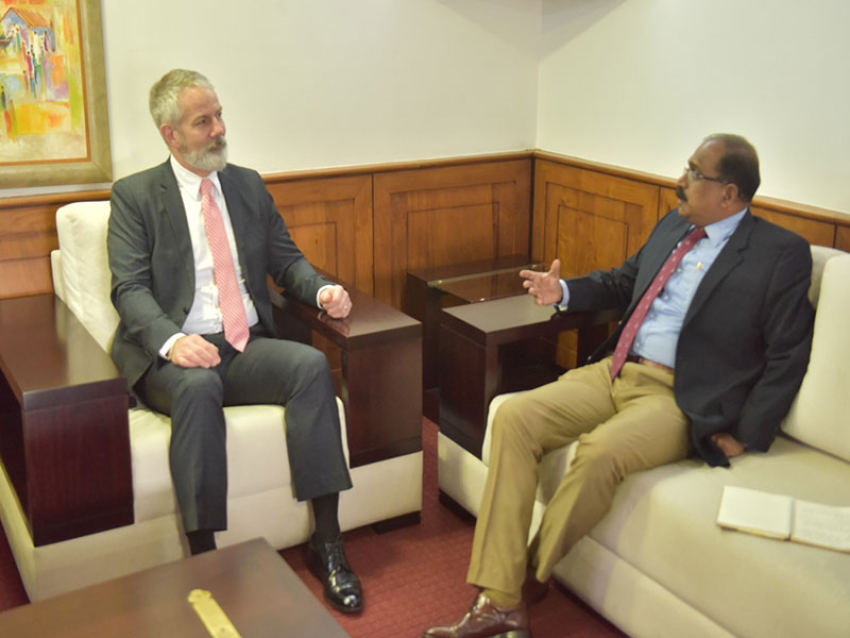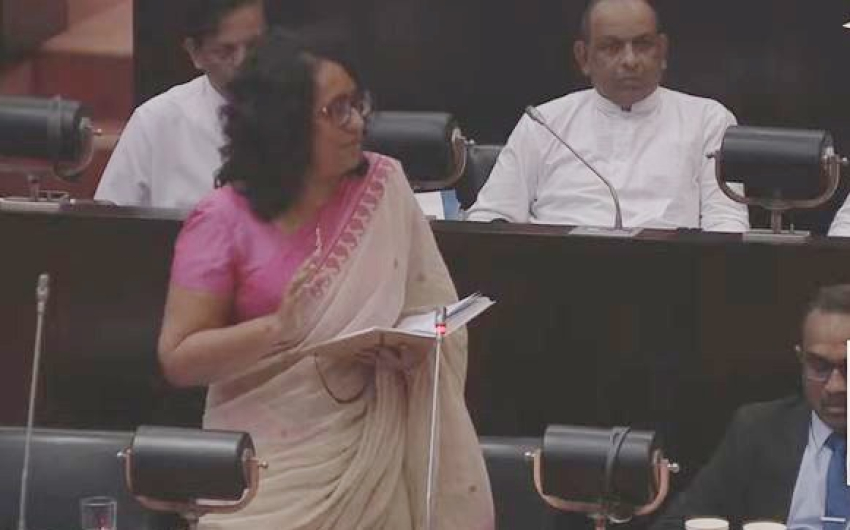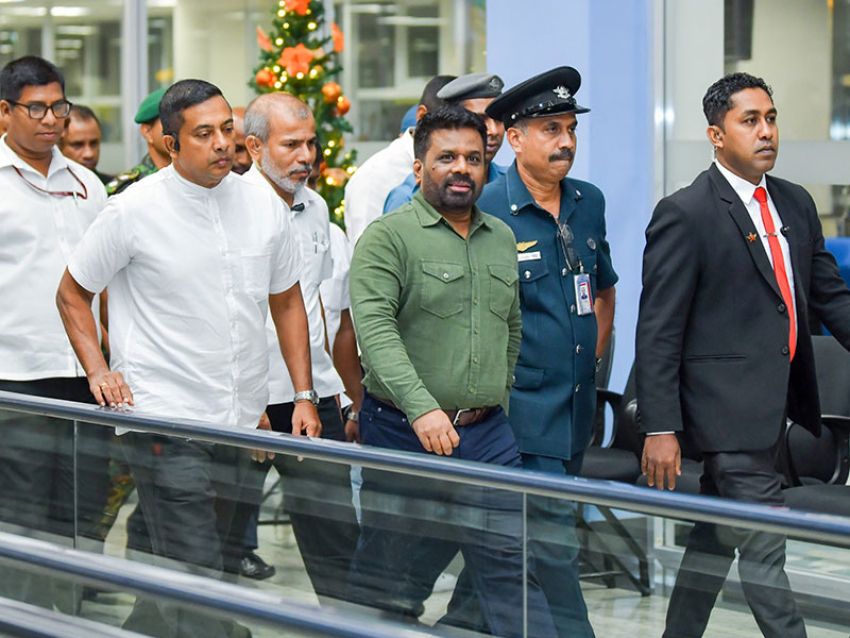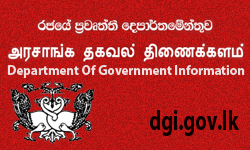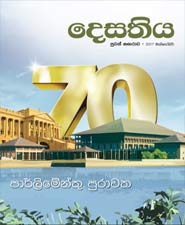Later, during the Ming Dynasty that ruled in China for 276 years from 1368 to 1644 AD, described by many as one of the greatest eras of orderly government and social stability in human history, the links between Sri Lanka and China had a marked expansion, with the Chinese navigator Zheng He, sailing to Sri Lanka many times, which is considered the foundation for cultural and trade links between the two countries. There are also records of interactions between Sri Lanka and China during the Kotte Period.
The landmark in the relations between Sri Lanka and China in the modern period dates to the signing of the Rubber-Rice Pact between the two countries in 1952, which was a bold move by this country that was till then almost beholden to the Western nations, in the post-colonial policies, but made a major departure in ignoring the sanctions that the West, particularly the USA, had imposed on trade with Communist China. It is interesting that the Rubber - Rice Pact was signed under the UNP Government, and the Minister responsible was the late R.G. Senanayake, who held the portfolio of Trade & Commerce, in the Government of Sir John Kotelawala. This must have been a real shocker to the West, which would never have expected the UNP to have anything to do with a Communist government. The R-R Pact involved a considerable amount of concealed negotiations as well as a very distant transaction with Poland, in the Communist bloc of the time, being associated with the transfer of rubber to China, in return for the rice that came to Sri Lanka through other means
Through the R-R Pact, Sri Lanka guaranteed to import 270,000 metric tons of rice from China each year, while China guaranteed to purchase 50,000 tons of rubber each year for five years. The agreement was renewed every five years until 1982, and Sri Lanka benefitted by being offered 40 per cent more than the market price for rubber at the time, and selling rice to us for less than a third of the prevailing market price. This great deal in South-South relations that challenged an important aspect of western supremacy at the time, paved the way for diplomatic relations between Sri Lanka and the People's Republic of China established in 1957, under the Government of the MEP led by Prime Minister SWRD Bandaranaike.
History recalled
These important records in the past history of relations between Sri Lanka and China are recalled as President Xi Jinping of the People's Republic of China is due arrive on an official visit to Sri Lanka next Tuesday (16), the first such visit by a Chinese Head of State President Li Xiannian to this country in 28 years. The visit comes at a time when the Sri Lanka - China relations are at the strongest, and all promise of even more robust relations to follow in the coming years, with the expected signing of a Free Trade Agreement between the two countries, during this historic visit.
This visit of President Xi Jinping and the condition that prevails in Sri Lanka today, leads to an interesting story by a former journalist of the old Times of Ceylon, who covered the first visit to Sri Lanka by then Chinese Prime Minister Chou En-lai, in January 1957 to sign the agreement with Sri Lankan Prime Minister SWRD Bandaranaike, establishing diplomatic ties between the two countries. Premier Chou En-lai did a tour of the country at the time, when the highlight was visiting the ancient cities. When speaking to journalists after a tiring day at Polonnaruwa, the Chinese Prime Minister said he was impressed by the ancient monuments he saw and the reservoirs such as the Parakrama Samudra, which remain marvels of engineering. But he had an interesting question. "Your ancient monuments are very impressive", he said, "but are there no modern constructions, especially since gaining freedom," he asked. I am uncertain whether Gal Oya and the Senanayake Samudra were on the itinerary, but even if they were, it would have seemed very much like the places of ancient glory.
The situation is very much different today. There is the Nelum Pokuna Centre for Performing Arts, the Bandaranaike Memorial International Conference Hall with the extension of the Sirimavo Bandaranaike Hall, the Supreme Court Complex in Colombo, all of them gifts from China. Those who arrive in Colombo travel on the Colombo - Katunayake Expressway, there is the Hambantota Port and the Mattala Airport, as well as other constructions at Hambantota, and many miles of the best modern roads and bridges built in recent years, all made possible by Chinese assistance, whether as aid or commercial construction projects.
The reality
This is the new reality of Sri Lanka - China relations that will greet the visiting President Xi Jinping. Yet there is much more to be known on the economic relations between Sri Lanka and China today. The relationship between China and Sri Lanka reached a new peak under the post-2005 administration, when in the landmark state visit to China in 2007, on the occasion of the golden jubilee celebrations of diplomatic relations, President Mahinda Rajapaksa signed eight important bilateral agreements and MOUs with China.
More recently in 2009, an investment facilitation agreement was signed by the China Development Bank and the Central Bank of Sri Lanka, under which the China Development Bank places a US Dollar deposit with the Central Bank of Sri Lanka, while also working towards long-term economic ties between the two institutions. In addition to these agreements and programs aimed at strengthening bilateral ties, China has also been a major provider of aid, technical assistance and has contributed towards numerous large-scale and socially relevant projects in Sri Lanka. These include the Nilabe hydropower station, Central Mail and Telegram Complex, Gin Ganga flood protection project, Udawalawe fresh water fish breeding and experimental station, Polonnaruwa water supply project, the restoration of Abhayagiri Dagoba, and the Southern Highway, to name a few.
China is also funding the Lotus Tower in central Colombo, which will be a key communication centre in the region, as well as a recreation and entertainment centre, and tourist attraction. The Hotel Industry also has received Chinese investment with several major hotel projects with Chinese investment already under construction, and more in the planning stage. The expansion of the city of Colombo, with the extension into the sea near Galle Face Green, is another massive infrastructure project with Chinese investment and technological support that will change the scenery, facilities and skyline of Colombo.
The future
I will conclude by quoting from Dr. Saman Kelegama, Executive Director of the Institute of Policy Studies on the future of China - Sri Lanka relations, as he saw it when commemorating the 61st National Anniversary of China, organized by the Sri Lanka-China Society, Bandaranaike Centre for International Studies, Colombo. "The close cultural and historical links between China and Sri Lanka have grown in the past five decades as the economic and diplomatic ties between the nations have strengthened. Particularly under the post-2005 period, bilateral relations have reached a new peak with Sri Lanka enjoying a steady source of aid and economic assistance.
"This is due to the fusion of two forces, viz., the post-2005 government increasingly going for bilateral loans, where no strings are attached and where the pehttp://www.sagepublications.com The visit of President Xi Jinping, on the invitation of President Mahinda Rajapaksa, while making a significant contribution to further strengthening of relations between Sri Lanka and China, will also help Sri Lanka reach a much faster rate of economic progress with an increase in trade with China, considerable foreign investment from China as well as the growth of Chinese tourism in this country.
This is a major opportunity for Sri Lanka, to build further on a relationship that has come through the centuries, and had a special impetus with the Rubber-Rice Pact in 1952. Sixty two years later, the bonds of Rubber and Rice are bringing new returns to a nation on the rise. (KH)


